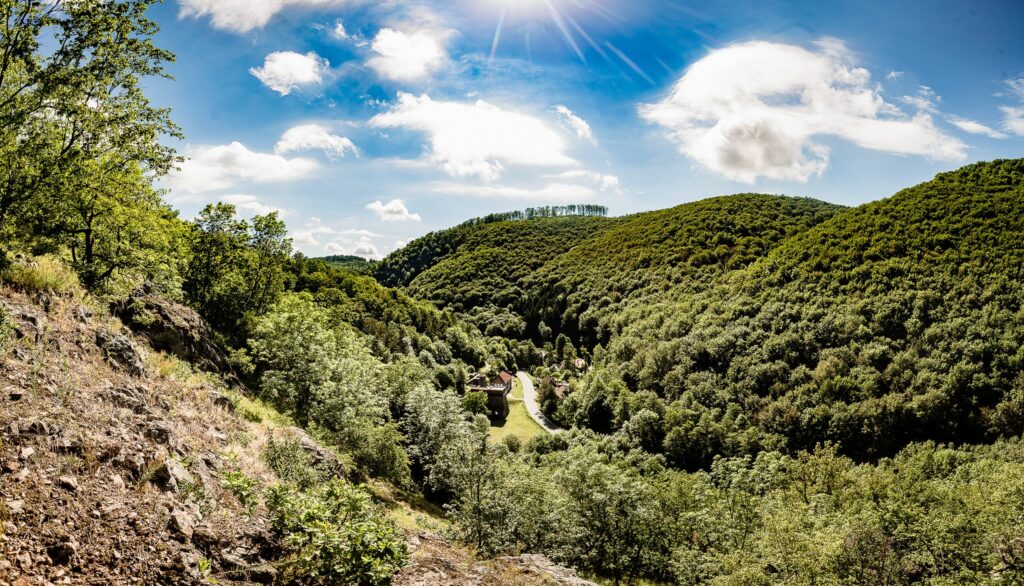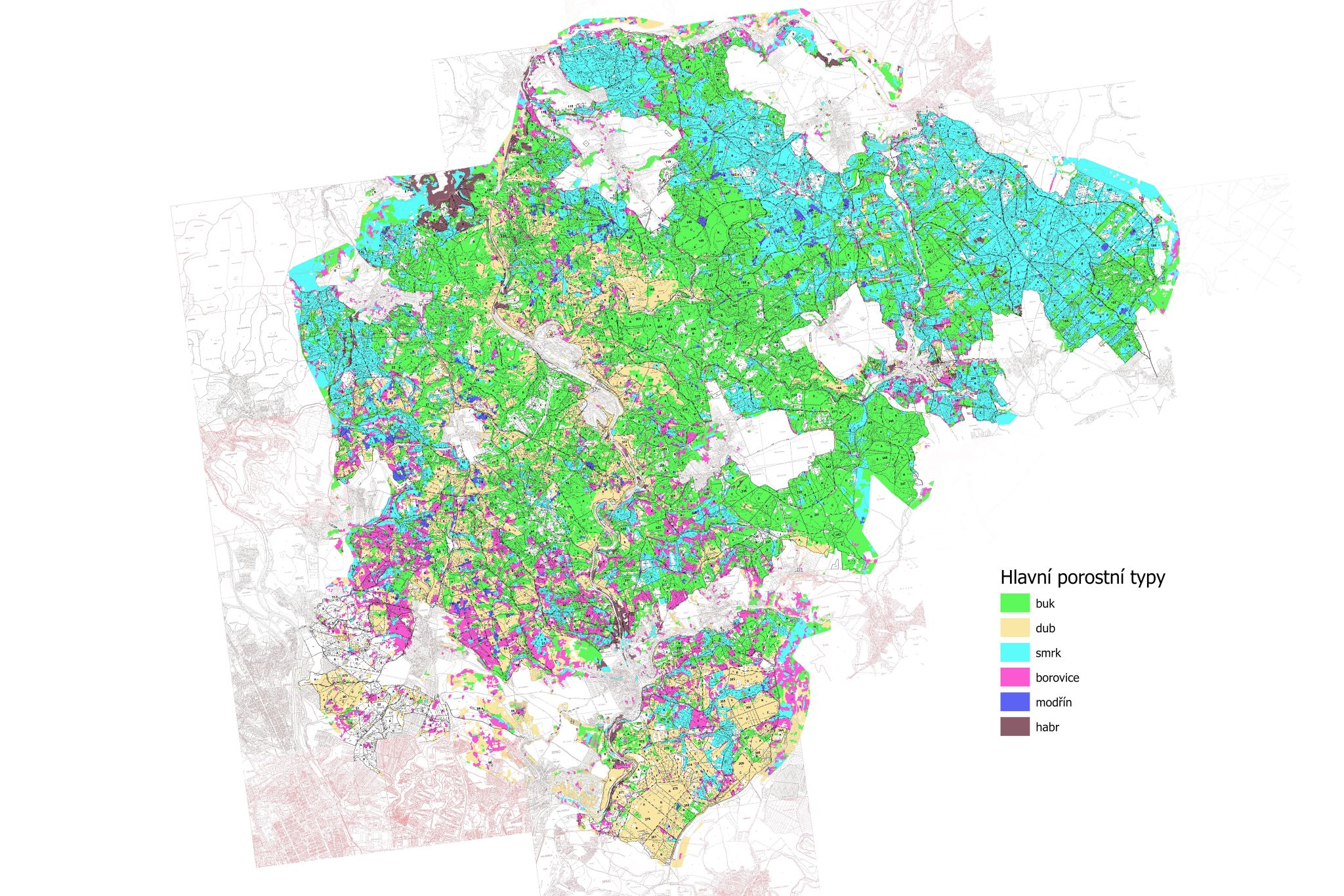
Natural and stand conditions
With its varied natural conditions, diverse species composition and excellent accessibility, the UFE is ideal for pedagogical activities. It consists of a complex of forests in PLO 30 – Drahanská vrchovina (Drahanská vrchovina), covering an area of more than 10 thousand ha northeast of Brno on the left and right bank of the Svitava River.
The terrain here is very rugged, with distinctive deep valleys and troughs, especially of the Svitava River and the Křtinský stream. The geological subsoil consists of granodiorite, Kulm crumbs and limestone, and one third of the area is located in the Moravian Karst Protected Landscape Area. The predominant habitats are those of the lower and middle altitudes and there are 116 forest types in total. Altitudes range from 210 to 574 m above sea level. The limiting factor is the average annual temperature of 7,5 °C and the average annual rainfall of around 600 mm, which is unevenly distributed over the relatively small area of the enterprise.
The representation and distribution of woody plants in the UFE well reflects the vegetation stages and habitat conditions. Except for mountain species, not all tree species occurring in the Czech Republic are found here. Overall, 62% of the stand area is occupied by deciduous trees (dominated by beech 33%) and 38% by conifers (dominated by spruce 19%).
In terms of vegetation types, mixed stands of diverse composition generally predominate. In the southernmost (and at the same time lowest and driest) parts of the UFE, beech-oak and pine-larch mixed stands predominate, including oak-hickory coppice.
In the central part of the forest, these then change into the most important oak-beech and beech woods with spruce and larch to the more or less cultivated beech-spruce woods in the northern part. The specific features are the floodplain forests with summer oak, ash, hazel and poplar in two isolated parts south of Brno – in the Rajhrad pheasantry and in the Sokolnice game reserve.




